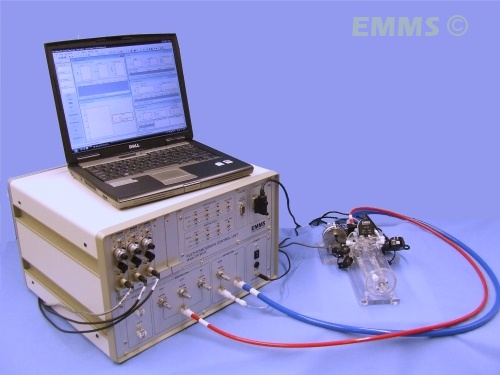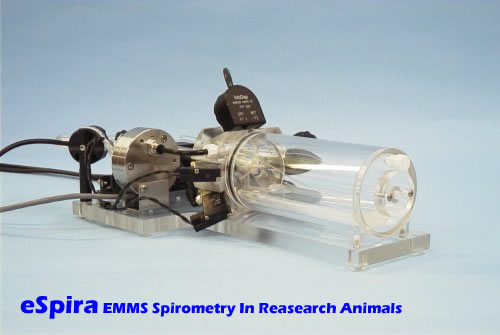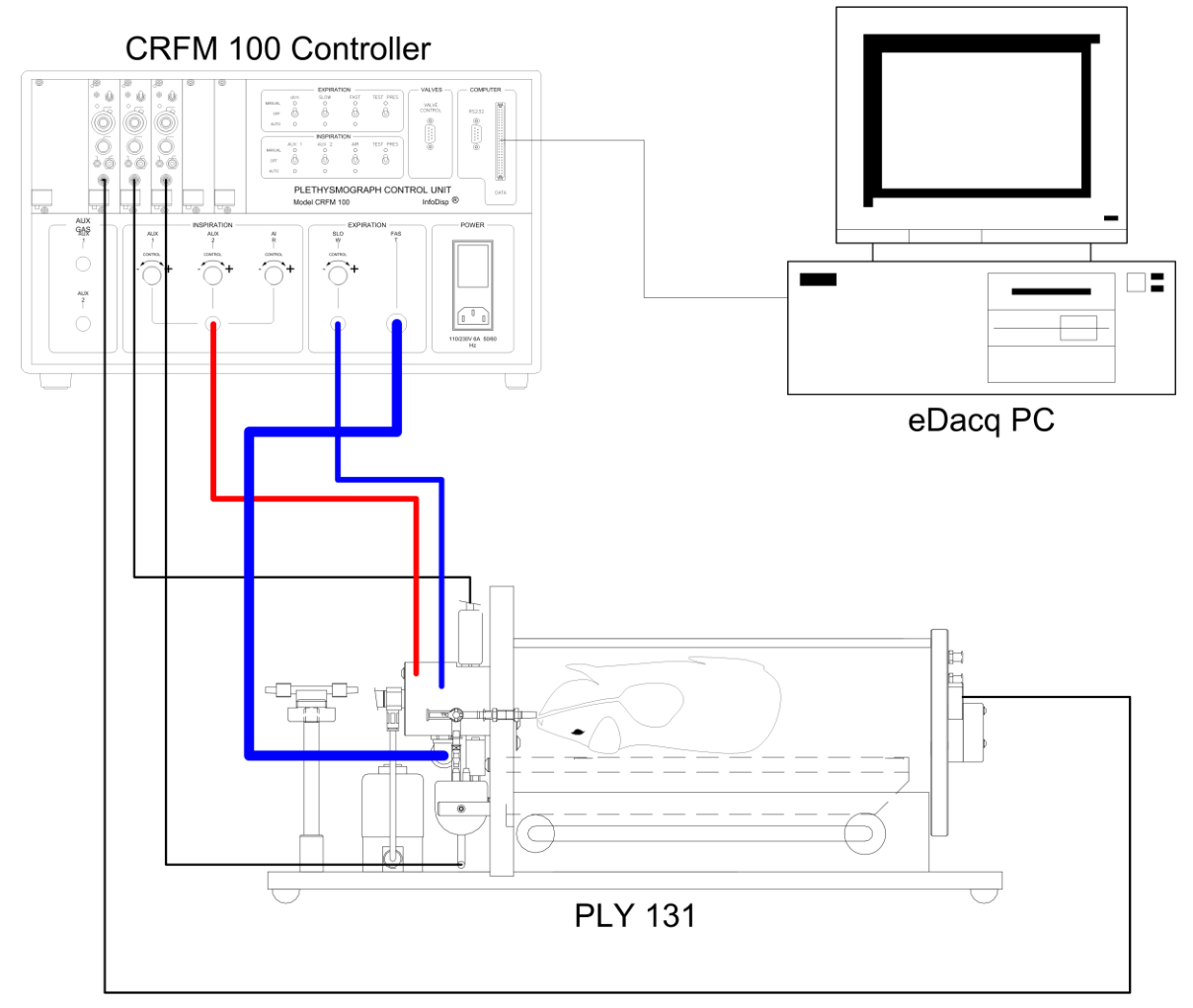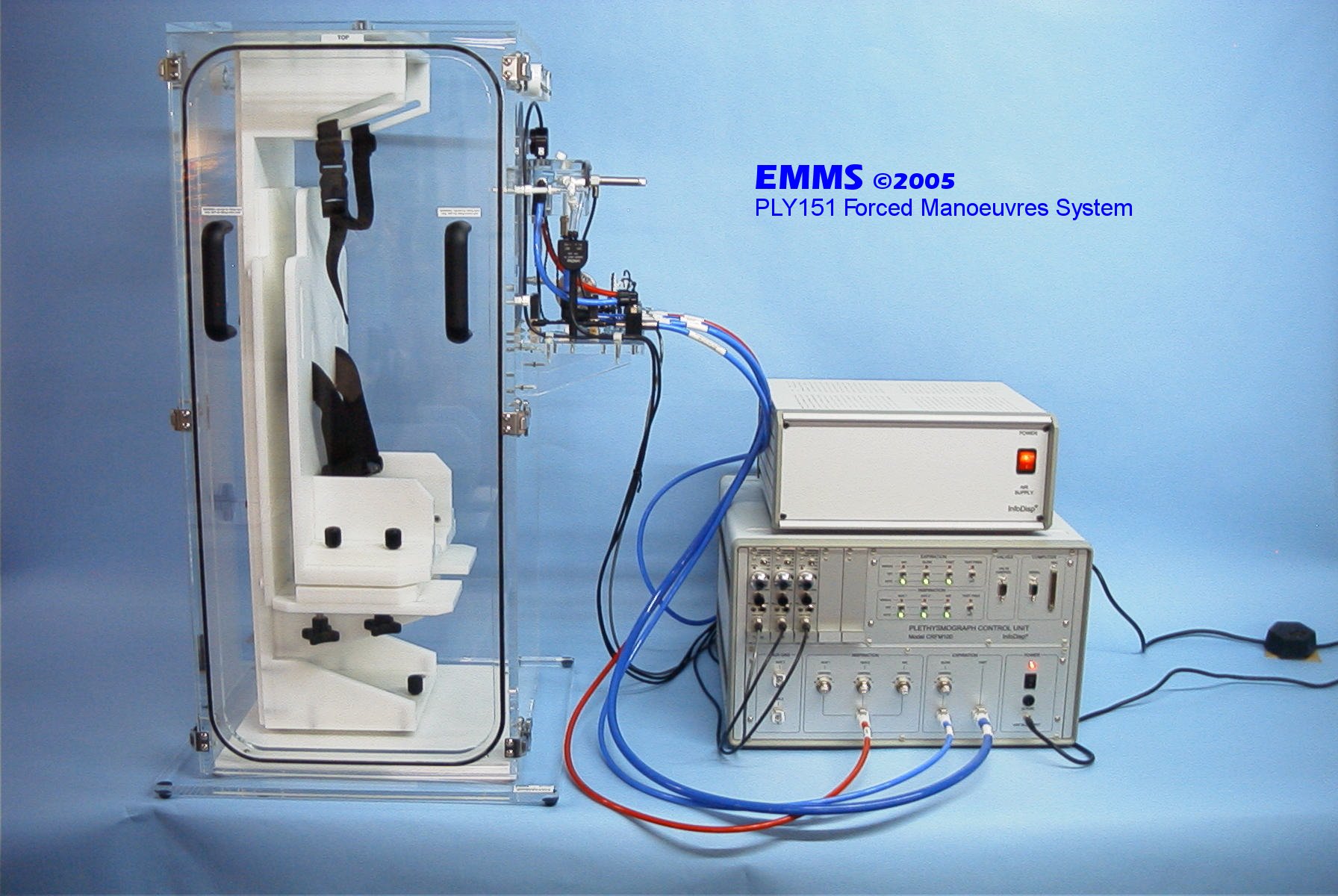Description
Pulmonary Function Testing (PFT), also known as Forced Expiratory Manoeuvres (FEM), is a technique where the animal is anesthetized and tracheotomized (or intubated in some cases), and a series of respiratory manoeuvres are performed by the system to obtain parameters such as Lung Volumes and Forced Expiratory volumes. These results are comparable to spirometry tests performed in clinical settings.

Advantages
Can be compared with human spirometry results
Test are fully automated and customizable
Whole experiment takes less than 5 minutes to be performed
Possible to meassure classic Resistance and Compliance
Option to monitor Blood Pressure simultaneously
Applications
Pulmonary Function Test (PFT) is used commonly in a wide variety of research applications such as COPD, Asthma and Pulmonary Fibrosis, as it provides detailed information of the lungs.
The system performs 3 different tests during the experiment. A Volume History inflation can be performed prior to each test, to pre-condition the airways. The tests are:
– Fast Expiratory Volume (FEV), where the lungs are inflated to Total Lung Capacity (TLC), and then exposed to a negative pressure reservior to execute a fast deflation.
– Functional Residual Capacity(FRC), where the subject needs to breath spontaneously against a blockage. Boyle’s Law is used to determine the FRC.
– Quasi-Static Pressure Volume (PV) where the lungs are inflated to Total Lung Capacity (TLC) and deflating them slowly. A PV curve is then plotted on expiration.
In addition, before the tests are performed it is possible to measure dynamic Resistance and Compliance.
Below are the results that each one of the tests provide:
| Name | Units | Description |
|---|---|---|
| FRC | ml | Functional Residual Capacity |
| DeltaP | cmH 2 O | Pressure difference |
| DeltaV | ml | Volume difference |
| Pb | mmHg | Barometric Pressure, as set in Control Options |
| Tol | % | Percent tolerance between accepted breaths |
| DeadSp | ml | Amount of dead space, as set in manoeuvre options |
| Name | Units | Description |
|---|---|---|
| IC | ml | Inspiratory Capacity, volume inspired during slow inspiration |
| FVC | ml | Forced Vital Capacity, volume expired during fast expiration |
| FRC | ml | Functional Residual Capacity, as entered in manoeuvre options |
| ERV | ml | Expiratory reserve volume, FVC – IC |
| TLC | ml | Total Lung Capacity, FRC + IC |
| RV | ml | Residual Volume |
| Pfrc | cmH2O | Pressure at FRC |
| Cmax | ml/cmH 2 O | Maximum compliance |
| P_Cmax | cmH2O | Pressure at max compliance |
| V_Cmax | ml | Volume at max compliance |
| Cchord | ml/cmH2O | Chord compliance between 0-10cmH2O |
| Cfvc50 | ml/cmH2O | Compliance at 50% VC |
| C_P0 | ml/cmH2O | Compliance at 0 pressure |
| Pmax | cmH2O | Max pressure |
| Pmin | cmH2O | Min pressure |
| tHold | s | Breath hold time |
| Name | Units | Description |
|---|---|---|
| IC | ml | Inspiratory Capacity, volume inspired during slow inspiration |
| FVC | ml | Forced Vital Capacity, volume expired during fast expiration |
| ERV | ml | Expiratory Reserve Volume, FVC-IC |
| FEV25 | ml | Volume expired in first 25ms of fast expiration |
| FEV50 | ml | Volume expired in first 50ms of fast expiration |
| FEV75 | ml | Volume expired in first 75ms of fast expiration |
| FEV100 | ml | Volume expired in first 100ms of fast expiration |
| FEV200 | ml | Volume expired in first 200ms of fast expiration |
| FEV400 | ml | Volume expired in first 400ms of fast expiration |
| FEVPEF | ml | Volume expired at peak expiratory flow |
| tI | s | Inspiration time |
| tE | s | Expiration time |
| Pef | ml/s | Peak expiratory flow |
| MMEF | ml/s | Mean Mid Expiratory Flow, average flow between 25% – 75% FVC |
| FEF75 | ml/s | Forced Expiratory Flow at 75% of FVC (25% expired) |
| FEF50 | ml/s | Forced Expiratory Flow at 50% of FVC |
| FEF25 | ml/s | Forced Expiratory Flow at 25% of FVC (75% expired) |
| FEF10 | ml/s | Forced Expiratory Flow at 10% of FVC (90% expired) |
| dVPEF | % | % of FVC remaining at PEF |
| HoldTime | s | Measured breath hold time |
| pInsp | cmH 2 O | Pressure difference between start and end of inspiration |
| pExp | cmH 2 O | Pressure difference between start and end of expiration |
Specifications
The table below shows the standard chamber sizes. For any other species or sizes please contact us.
| References | Species | Size Guidance |
|---|---|---|
| PLY 111 | Mouse | 15 to 30 g |
| PLY 121 | Rat, Guinea Pig | <900 g |
| PLY 131 | Guinea Pig | >900g |
| PLY 141 | Rabbit | >1000g |
| PLY 151 | Primate NHP | Contact us |
Images
Selected References
Tetomilast Attenuates Elastase-Induced Pulmonary Emphysema through Inhibition of Oxidative Stress in Rabbits
Bulin Baila, Yasushi Ohno, Hisashi Nagamoto, Kounori Kotosai, Youichi Yabuuchi, Norihiko Funaguchi, Fumitaka Ito, Junki Endo, Hidenori Mori, Genzou Takemura, Takako Fujiwara, Hisayoshi Fujiwara and Shinya Minatoguchi
Development and Characterization of a Long-Term Murine Model ofStreptococcus pneumoniaeInfection of the Lower Airways
Louise Haste, Kathryn Hulland, Sarah Bolton, Hasan Yesilkaya, Kenneth McKechnie, Peter W. Andrewa
Angiotensin-(1-7)-mediated Mas1 receptor/NF-jB-p65 signaling is involved in a cigarette smoke-induced chronic obstructive pulmonary disease mouse model
Yong Zhang, Yang Li, Ce Shi, Xiaomin Fu, Lingdi Zhao, Yongping Song




